|
Monday, April 5, 2010
Progress Notes
A couple of weeks ago the last link connecting the south and north sections of the new bridge over the Osage River was put in place (photo 01).
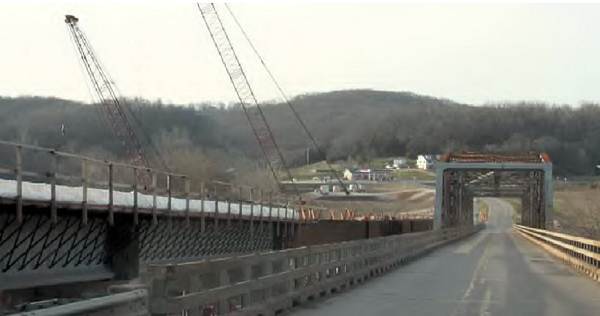
01 Bridge Link Completed - Photo by Ginny DuffieldGinny Duffield covered the story in both the Autogram and Advertiser. For those who live far away or missed the story I thought I would place it here:
Bridge May Be Ready For Traffic In Mid June
With all the piers for the new Osage River Bridge completed and the last of the steel girders set atop them this week, workers will be putting in bolts and other fasteners before prestressed concrete panels can be put in place.
“All the substructure is essentially complete,” the Missouri Department of transportations’ resident engineer for the project, Terry Imhoff, said Monday, March 22.
The substructure includes two abutment, four land and two water piers. The two piers in the river were completed this winter with much of the work done from barges. Four precast concrete girders were used to span between the abutment and land piers. The longer spans across the river will be supported by steel girders, which are being put into place this month with the use of cranes.
Imhoff said the next task for the contractor will be to get reinforcing steel for the deck on the bridge, positioned and tied. Forming for the overhangs also needs to be done. He expects the concrete for the bridge deck to go in about June 1. That will be a one pour operation, Imhoff said.
APAC Kansas Bridge Division, the general contractor for the project, purchased a new paving machine for the project. The machine has been used twice on the project, once in September when the north approach was paved and again in November, when the longer south approach was paved.
After the deck is in place, the sidewalls will be constructed. Constructing the sidewalls will be a fairly easy and quick portion of the entire project, Imhoff said.
If the current construction pace continues, Imoff said he expects traffic to be using the new bridge sometime the middle of June. Because the river bank is being used as a staging area, any flooding on the Osage could cause some construction difficulties.
The contract for the bridges has an October 1 completion date. The contract includes the demolition of the old bridge which will take some time because of its proximity to the new structure.
The new bridge is 969 feet long, shorter than the 1,083 foot long old bridge. MoDOT’s District 5 Engineer Roger Schwartze said the shorter length cut $500,000 off the cost of the bridge.
The old bridge is 20 feet wide; the new one is 28 feet wide, with a pair of 11 foot driving lanes and two three foot wide shoulders.
Total cost for the project is about #8.5 million. It is touted by the state of Missouri as the first project to get underway in the nation with American Recovery and reinvestment Act (Stimulus) funds February, 17, 2009. At the time President Barack Obama signed the federal bill, MoDOT already had the design for the bridge and right of way purchased. It just did not have the money to build the bridge, Schwartze said.
The signing was televised on site and members of the Missouri Highway Commission were either at the bridge in Tuscumbia or attending via telephone link. Once the federal funds were assured the commission members approved constructing the bridge, along with some other “shovel ready” projects. A check was handed to the contractor and Governor Jay Nixon and others took part in a ground breaking ceremony. Local contractor Helton Sand and Gravel of Eldon started the earthwork, which included blasting away much of the bluff on the south end of the project area. Rock from there was transported to the north side of the river to use as fill.
Schwartze said the old bridge, built during the Great Depression 78 years ago, carries 3,300 vehicles a day. Trucks are limited to 15 mph on the bridge because of its condition, with a Condition 3 deck and a substructure in condition 4. One pier on the north river bank has false work around it to strengthen it.
After the collapse of a bridge with similar design features in Minneapolis, some other repairs were done to the bridge in September 2007, with trucks kept off of it until the repairs were made.
Past Progress Notes narratives about the history of the crossing of the Osage River have been featured:
You can read about the history and celebration of the opening of the 1905 swinging bridge.
And the history of the dedication of the new 1933 bridge, the one we are replacing currently.
It appears we finally may have us a new bridge sometime in June if the weather cooperates according to Ginny’s article.
The construction of the bridge, which was the first project to receive stimulus funds, caused some controversy. Quite a large number of representatives of the media has covered the story, and some of the reporting has not been complimentary about us or our bridge. One of the organizations which presented a negative opinion about the bridge and in some ways even our community was CNN. Talking to these sophisticated and wily people from back east isn’t always easy and for that reason we were very fortunate to have an advocate to take them on and speak for us. He is Wes Horton, who owns the Red Oak Inn just south of the bridge (photos 02 and 03).
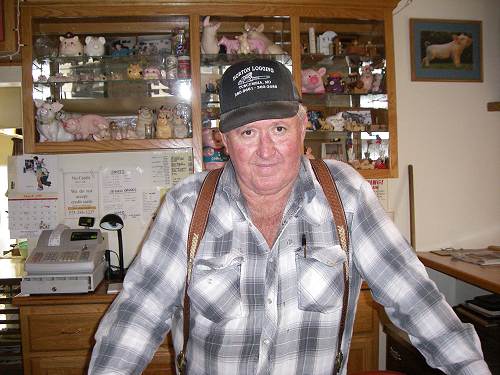
02 Wes Horton
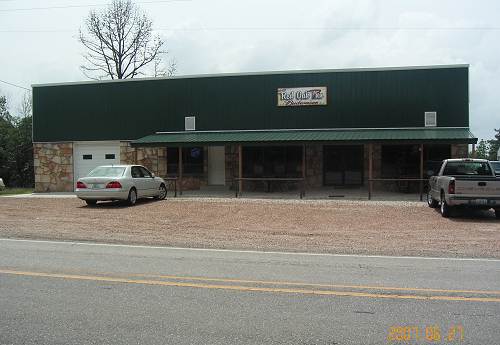
03 Red Oak Inn I’ve known Wes since school days at Tuscumbia; he was in the same class as my sister. Wes not only manages the Red Oak Inn but also has a large farming operation as well as a logging business. Here is the plat map showing Wes’s farms and properties in sections 10, 11 and 21 of Township 40N (photo 04).
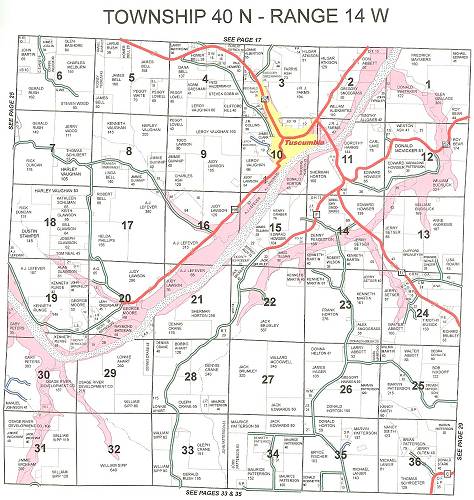
04 T40N - R14W
Click image for larger viewHere are a couple of Wes’s logging trucks (photo 05):

05 Logs and Trucks For those who missed seeing Wes on CNN I have here two videos in which he appears. The first one was recorded soon after the bridge project got underway on March 4, 2009:
The second CNN interview was a year later on January 29, 2010:
Wes told me that not only CNN but also Fox News as well as other organizations came to the Red Oak Inn to talk to him.
The Horton family has been in Miller County for a long time and is one of the really interesting Miller County families. Therefore, for this week’s narrative I wanted to present some of the family history of Wes Horton. To simplify things regarding Wes’s heritage, the list of his direct Miller County male ancestors is as follows:
Wes Horton family line in Miller County
1. William Isaac Horton
2. David Francis Horton
3. Willard Wesley Horton
4. Sherman Wesley (Wes) Horton
(Wes’s name is taken from his father, Willard Wesley Horton and his uncle Sherman Horton.)
The first member of the family to arrive, William Issac Horton, was included in one of Peggy Hake’s biographies of Miller County settlers (photo 08).
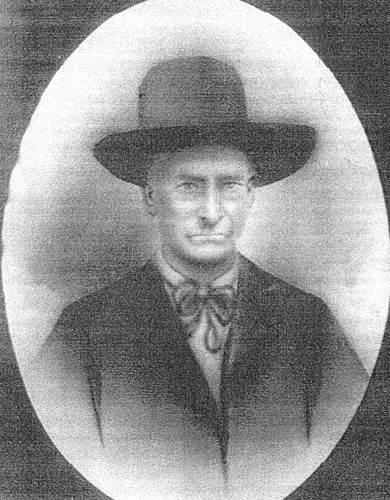
08 William Issac Horton - 1828-1906 Copied here are Peggy’s comments:
William Issac Horton
Peggy Hake
“Seeking and Searching Ancestors” January 1995
I have some information on William Issac Horton which I researched a few years ago for Imogene Beard Horton of Tuscumbia, Miller County, Missouri. She is the wife of Willard David Horton. Imogene wanted to know if the Horton family donated land for the Dog Creek School. Here is the information I found:
William Issac Horton homesteaded some Miller County land on May 25, 1859. It was located in Section 4, Township 39, Range 14. The old Dog Creek school was built on part of this land. Issac took out several mortgages on this land and borrowed it through the Miller County School fund. The mortgages were dated in 1864, 1873, 1889, and 1890. Evidently all these deeds of trust were paid off because there were no outstanding debts on the land.
Note: here is the plat map of T39 R14 and a close-up of sections 4 and 5 (photos 09 and 10):
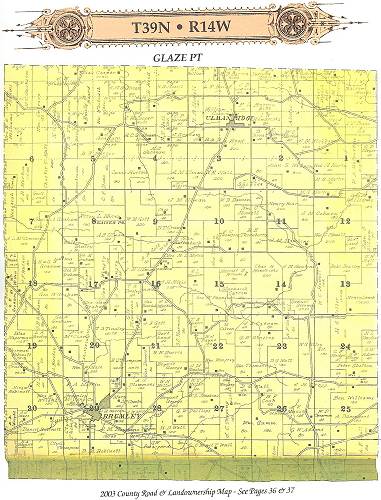
09 T39N-R14W - William Issac Horton
Click image for larger view
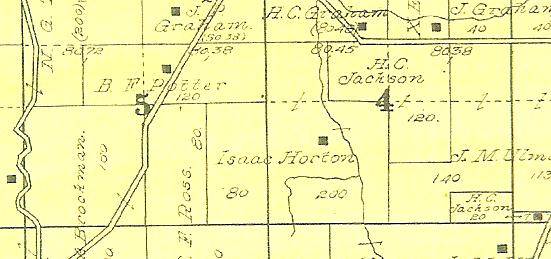
10 Sections 4 and 5 - TN39-R14W - William Issac Horton The small black square in section 4 is where the Dog Creek school was located.
William Issac Horton and his family came to Miller County from Virginia in about 1856 and settled in Glaize Township on the land mentioned above. He and his wife, Isabella Benton Horton (called Abby in records) were parents of several children including
William H. Horton, Lucy Jane Horton, Joanna Horton, Robert Horton, Michael Horton, James Horton, Catherine Horton, David F. Horton, Mary Horton, Nancy Horton, Rhoda Horton, Hezekiah Horton.
William Issac Horton and his wife, Isabella, are buried at Gott Cemetery north of Brumley, Miller County, Missouri. The entries on the stones are as follows:
William Issac Horton: January 20, 1828…April 1900
Isabella Horton: July 20, 1824….November, 1898
William was a veteran of the Civil War and served in the Union Army as Corporal in company H 6th regiment, Missouri State Cavalry.
More information about William Issac Horton is present in the Horton family history, a copy of which was shown me by Ellen Phillips Horton, whose husband Frank Horton, sadly passed away only a year or so ago. Here is the family history account of William Issac Horton:
William Issac Horton
William Issac Horton was born in Gate City, Scott County, Virginia on January 20, 1828. His father was Robert Horton and his mother was Joanna Robinett Horton. William and Isabelle (Benton) Horton were married on August 11, 1846 and raised twelve children. The year they migrated to Missouri is not known with certainty; however, Issac was a member of Company H, 6th Cavalry Regiment Home Guard Missouri State during the Civil War. He enlisted December 15, 1861 in Miller County, Missouri and was mustered out February 15, 1862 in Rolla, Phelps County, Missouri, being discharged for disability, on March 25, 1863. He held the rank of Corporal during his tour of duty. The Captain, Commander of the Osage county Home Guards, 2nd Cavalry regiment provided this information. William is buried at the Gott Cemetery, Miller County, Missouri, near Brumley. William’s parents, Robert and Joanna (Robinett) Horton, who had accompanied him to Missouri, also are buried at the Gott Cemetery. Their gravesites are marked by a row of river rock. However, William and his wife Isabelle have their own gravestones.
William Issac Horton was Wes Horton’s great grandfather. David Francis Horton (photo 11), son of William, was Wes Horton’s grandfather.
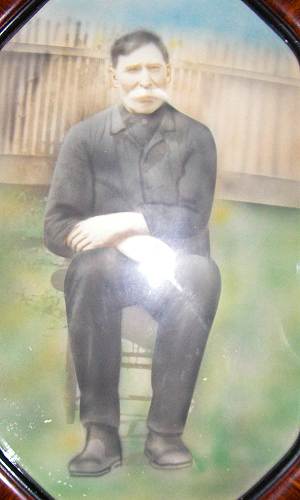
11 David F. Horton David Francis Horton had a river farm on the south side of the river in T40N R14W Section 21 (photo 12).
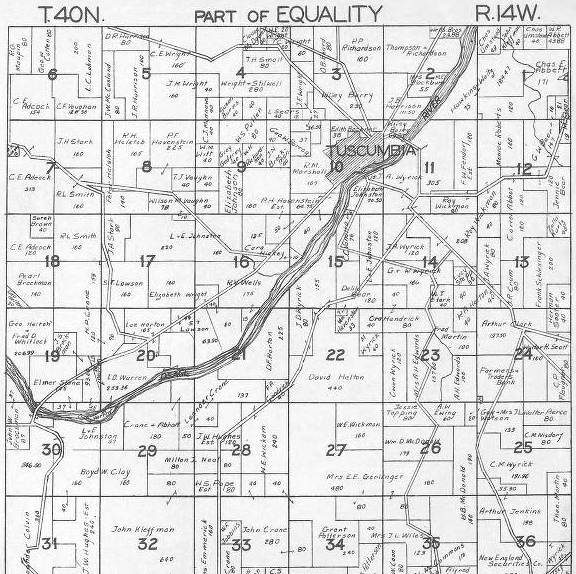
12 T40N-R14W - S21 Wes Horton continues to own this farm today.
Here are two old photos taken of family members at the home of David Francis Horton which also include Willard Wesley Horton, Wes’s father (photos 13 and 14).
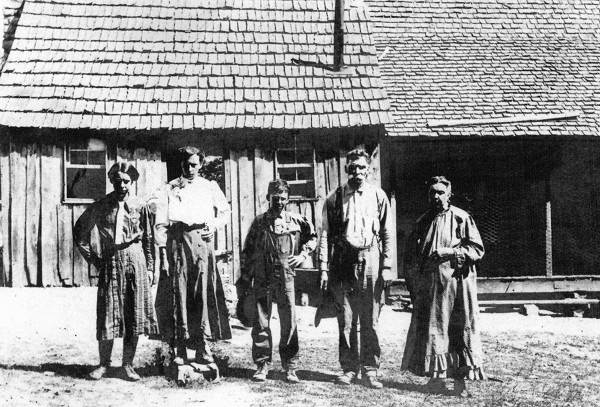
13 Horton Family The names for Photo 13 are:
Ella Horton Hibler,Anna Bell Horton, Willard Wesley Horton, David F. Horton, Rebecca Ann Neal Horton.
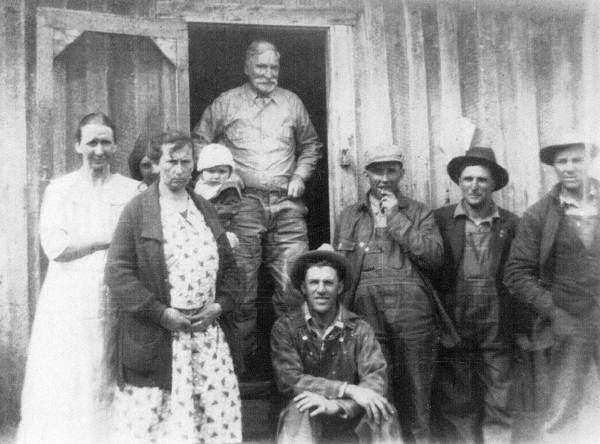
14 Horton Family The names for Photo 14 are:
Mary Horton Walker, Ella Horton Hibler, Baby Marie Hibler, David Francis Horton, Louis Bud Horton, Willard Wesley Horton, Lee Shorty Horton, Sherman Horton
Here is a photo of some of the farm buildings on the Horton home place (photo 15):
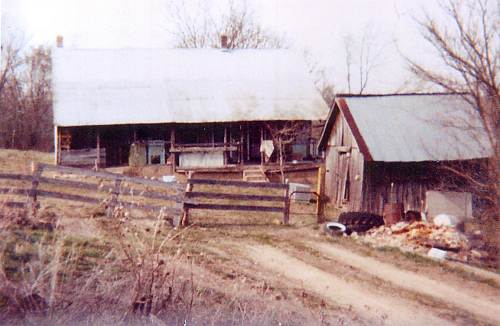
15 Original Horton Farm Buildings The next photo includes some of the Horton family as well as members of the Carico family. Many readers may well remember Bob Carico (photo 16).
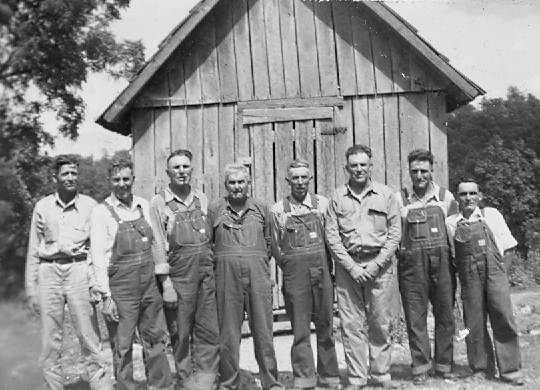
16 Horton Family Here are the names of those in photo 16:
Everett Hibler, husband of Willard Wesley’s sister, Eliew
David C. Horton, brother to Willard Wesley
Joseph Sherman Horton, brother to Willard Wesley
John Carico, father of Bob Carico
Willard Wesley Horton, father of Wes Horton
Robert Louis (Bud) Horton, brother to Willard Wesley
Lee Orvy Horton (Shorty) brother to Willard Wesley Horton
Bob Carico
Here is a photo of Willard Wesley Horton in WWI uniform with a couple of friends (photo 17):
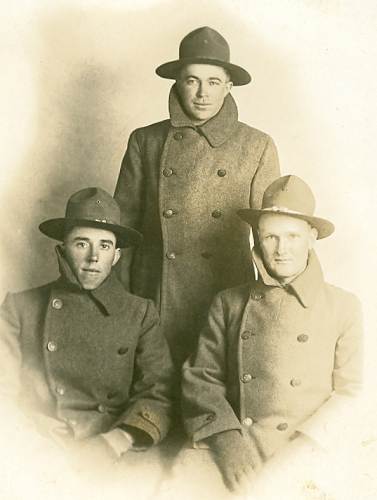
17 SWillard Wesley Horton (Sitting left), Arie Ira Beard (Standing) and Arthur Limbach And here is a photo of Wes’s uncle Leo (Shorty) Horton in WWI uniform (photo 18):
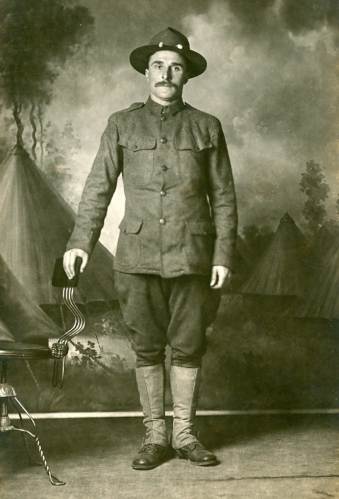
18 Leo Shorty Horton - Son of David Francis Horton Willard Wesley Horton was father to Wes Horton. He was married to Antonie (Tonie) Malis, who was of Austrian heritage. Her parents, originally from Austria, had moved to Frontenac, Kansas where Willard met her when he was working there in the early 1920’s. Here is a photo of Tonie and her family when she was a young girl (photo 18a):
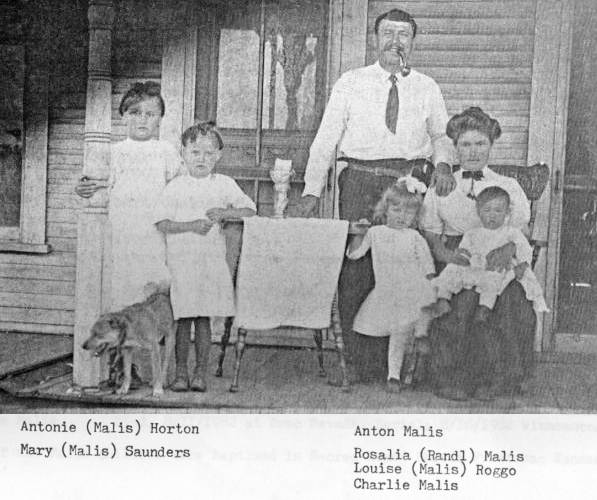
18a Malis Family After a few years, Willard and Tonie returned to Miller County. Here is a photo of their young family several years after returning (photo 18b):
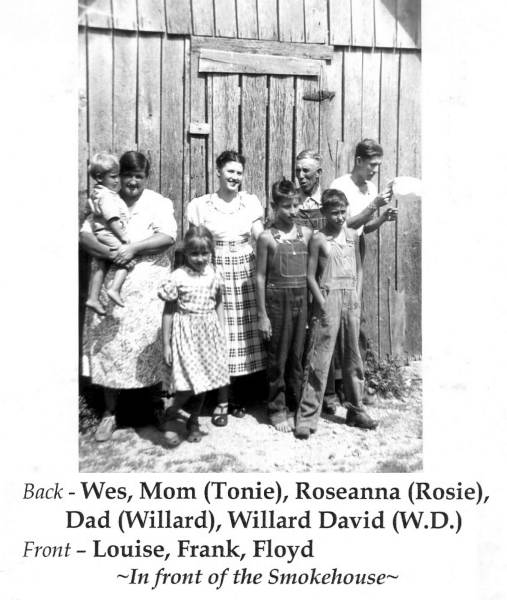
18b Young Willard Wesley Horton Family Another photo taken of the Willard Wesley Horton family quite a few years later when Wes was a young boy is presented here (photo 19):
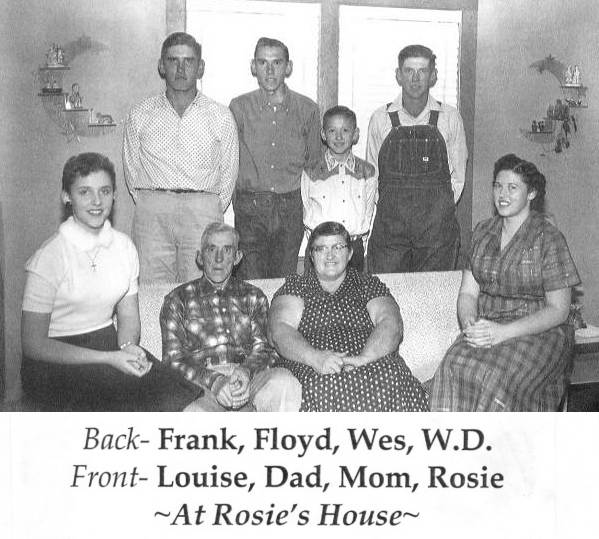
19 Willard Wesley Family And here is a more recent photo of the children of Willard Wesley Horton (photo 20):
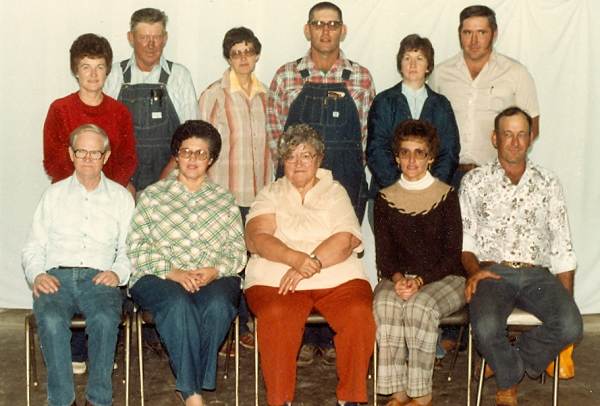
20 Willard Wesley Horton Children - 1981 The caption for photo 20 reads:
Children of Willard Wesley Horton
October 10, 1981
Standing:
Imogene and Willard David Horton
Ellen and Frank Horton
Connie and Wesley Horton
Sitting:
Paul and Rosanna (Horton) Smith
Grandmother Tonie Horton
Louis (Horton) and Arthur Hager
As noted in the photo caption, Rosanna Horton was married to Paul Smith, son of Roy Smith of Tuscumbia (photo 21).
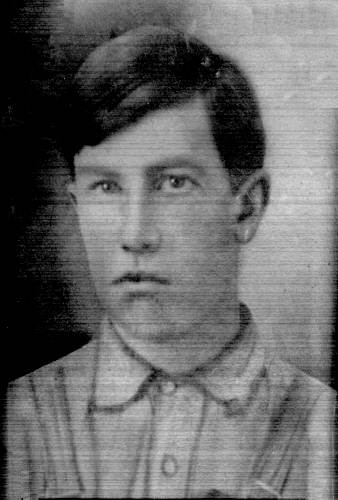
21 Roy Edgar Smith Roy had a saw mill across the road from his home in Tuscumbia located on the Tuscumbia Versailles Road. The next photo is of Roy and members of the Horton family when they were working up some lumber for Willard Wesley Horton’s home (photo 22).
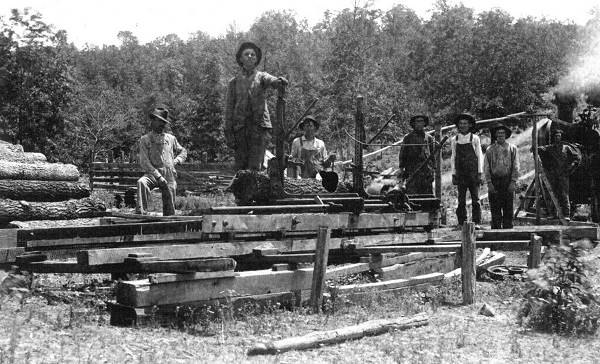
22 Working Lumber Here are the names of those in Photo 22:
Everett Hibler, Sherman Horton, Roy Smith, Willard Wesley Horton, Louis Horton, David F. Horton, Lee Shorty Horton.
Here is another photo of Roy Smith at his saw mill (photo 23):
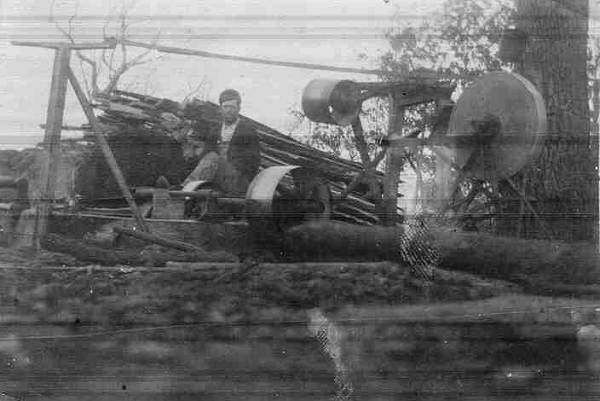
23 Roy and his Saw Mill Besides Roy Smith’s relation to the Horton family through his son, Paul Smith, who married Roseann Horton, daughter of Willard Wesley Horton, Roy has another connection as well. His mother, Mary Elizabeth Poynting Smith (photo 23a), who first was married to Roy’s father, Francis Smith (photo 23b), later in life married David Frank Horton after David’s first wife, Rebecca Ann Neal, passed away.
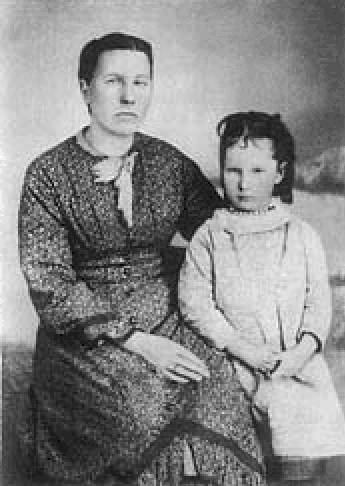
23a Mary Elizabeth Poynting Smith with daughter Rosa
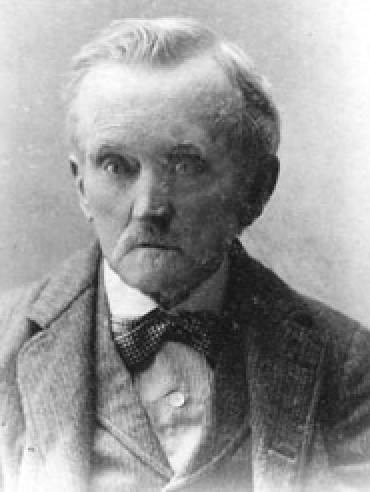
23b Francis Smith You can read more about the Smith family at this previous Progress Notes.
The Horton story in Miller County is much longer than what is presented here. It has always seemed to me that just about any of the members of the family were interesting in their own right and had their own personalities. Because William Issac Horton had so many children, many of whom migrated west, the Horton name is well distributed throughout our western states. And if one pursues the Horton name back east the lineage can be traced to Barnabus Horton from England who came here in 1635. Here is a short summary of those earliest Hortons in America (photo 24):
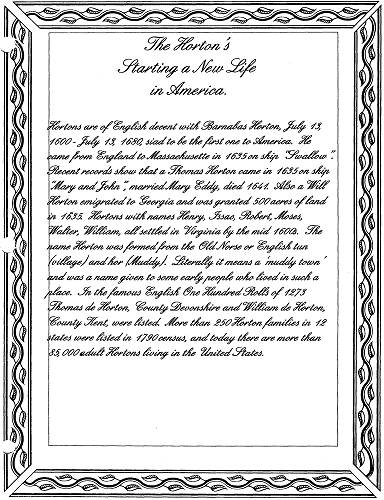
24 Horton Family History
Click image for larger view
An electronic sign on roads leading to the Saline Creek Bridge on Highway 17 recently was observed by motorists in the area (photo 25).

25 Highway 17 Bridge Sign The reason for the bridge closure was explained by this news release:
MoDOT Central District News Release
Route 17 Bridge Over Saline Creek to Temporarily Close for Drilling Work
MILLER COUNTY - Crews with the Missouri Department of Transportation will drill for rock and soil samples at the Saline Creek bridge on Route 17 in Miller County starting on Monday, March 22.
The bridge will be closed to traffic during the work, which is scheduled for March 22-26, between 8 a.m. and 4:30 p.m., weather permitting. The Saline Creek bridge is located approximately eight miles from U.S. Route 54.
I’m not sure what the purpose was of MoDOT in obtaining the rock and soil samples, but I do know that the bridge roadway is crumbling and in disrepair. It is even older than the bridge across the Osage now being replaced.
However, the mention of Roy Smith above reminded me that he helped build the Highway 17 Bridge across the Saline Creek. His grandson, Ray Dean Smith, gave me some photos Roy had obtained of the construction of the bridge (photos 26 thru 31).
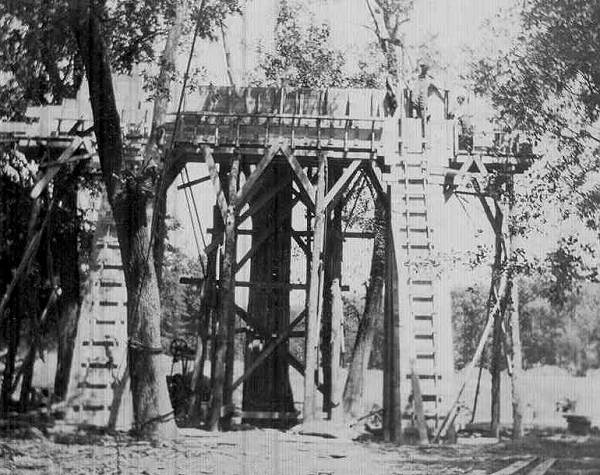
26 Saline Bridge
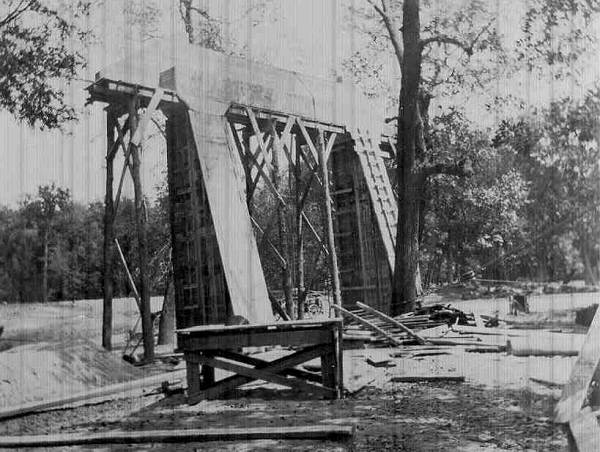
27 Saline Bridge
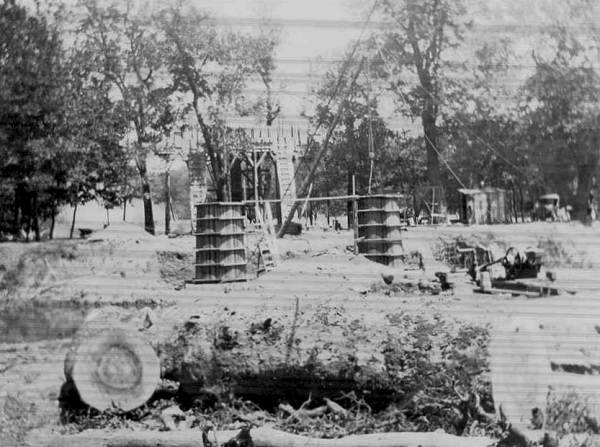
28 Saline Bridge
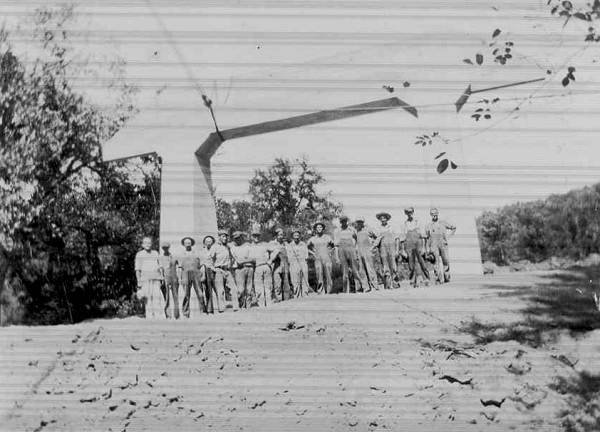
29 Saline Bridge
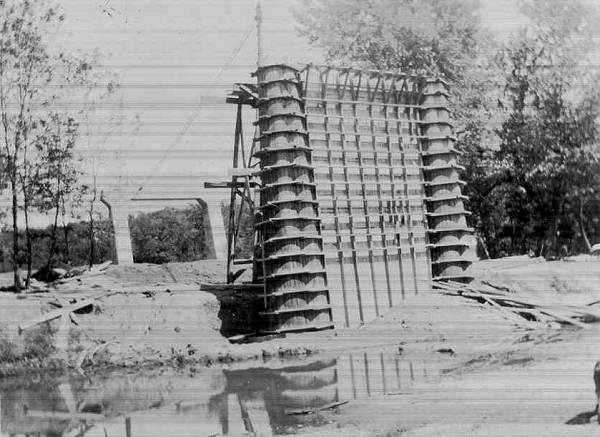
30 Saline Bridge
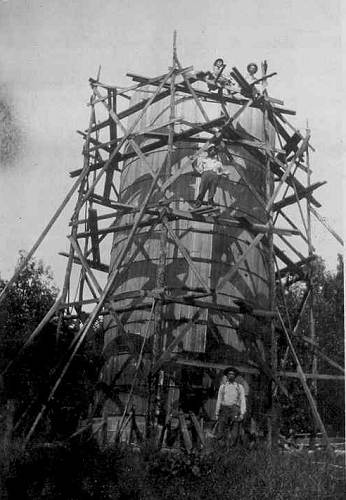
31 Saline Bridge The bridge was completed in 1925 according to a sign placed at on both ends of the bridge (photo 32).
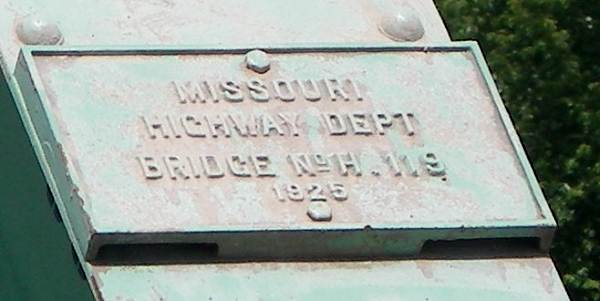
32 Sign on Bridge Here is a recent photo taken from under the bridge (photo 33), and, sad to say, here is a photo taken from the north end of the bridge showing how the road is crumbling away on the sides (photo 34).
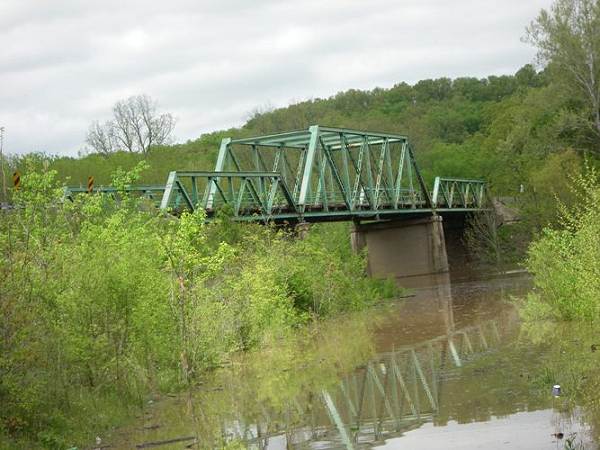
33 Saline Creek Bridge
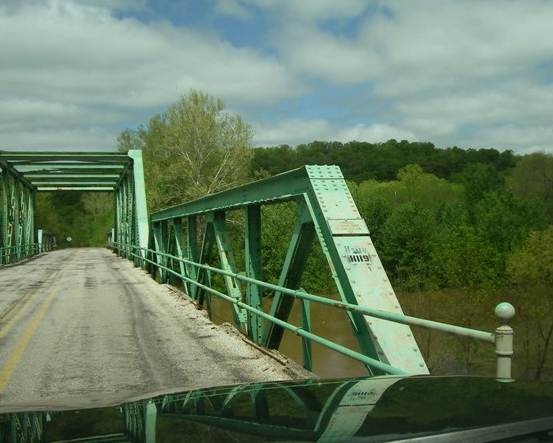
34 Crumbling at the Edges
C.B. Wright’s Diary (photos 35 and 36)
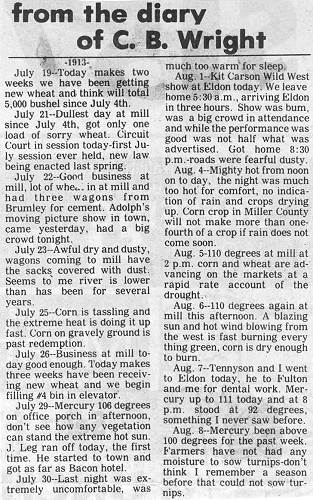
35 C.B. Wright Diary - July and August 1913
Click image for larger view
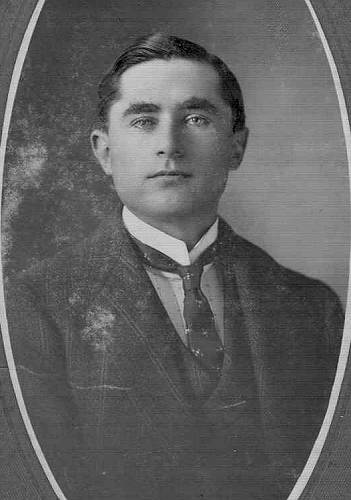
36 Clarence Wright C.B. Wright’s diary for this week covering several days in July, 1913, mostly emphasizes the heat spell Miller County was experiencing that month. No television or radio created an environment for people to be very receptive to the various traveling shows that came to town from time to time. One of the popular events was the traveling moving picture show. C.B. calls it “Adolph’s Moving Picture Show.” For a time early on a separate building was used in Tuscumbia for the moving picture shows. It was located near the barber shop under the bluff. The show building is gone but the barber shop remains. The reason C.B. referred to the show as “Adolph’s” most likely is related to the originator of the moving picture show in America, Adolph Zukor. I found an article describing Zukor’s life and career which some may find interesting:
Adolph Zukor (photo 37)
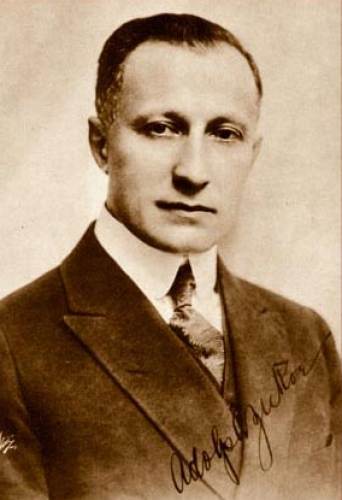
37 Adolph Zukor Although he was more of a businessman than a film buff, Adolph Zukor, the longtime head of Paramount Pictures during its heyday, was a key figure in the development of the powerful studio system that ran Hollywood from the late '20s through the '60s. One of the very first studio moguls, Zukor's was truly a rags-to-riches story, and his success was borne of hard work, ambition, and a shrewd ability to understand the public's whimsical taste.
He was born in Risce, Hungary, where his family had to struggle to meet their basic needs. At age 16, Zukor immigrated to the U.S. and found a job working as a sweeper at a New York furrier. Within a few years, Zukor was running his own fur shop in Chicago. In 1903, Zukor branched out and bought an amusement arcade. Two years later, he and Marcus Loew teamed up to buy a chain of arcades. Eventually he became the treasurer to Loew's chain of movie theaters. It was Zukor who saw an enormous untapped fortune within the pockets of the upper and middle-class folk who considered moving pictures vulgar and refused to go to the tacky little theaters and arcades to see them. He figured that to get them to come to the theater, he would have to make going to the movies a more theatrical experience, complete with elaborate, comfortable movie houses, and longer, more dramatic films. To this end, he began distributing a four-reel European film, Queen Elizabeth. American audiences proved hungry for culture and Zukor made enough profit to found the Famous Players Production Company. Using the motto "Famous Players in Famous Plays," Zukor's company brought film adaptations of popular Broadway shows featuring well-known actors to theaters. Again it was a profitable venture that became even more so after he signed beautiful Mary Pickford, the actress who captured the nation's heart. She was Famous Players' headline star for years. Zukor merged his company with the Jess L. Lasky Feature Play company in 1916 thereby creating the Famous Players-Lasky Corporation, where after a five-year struggle, Zukor became president. The company gained real power after it purchased the tiny Paramount distributions. Zukor took the name Paramount for the whole business and began buying up movie theaters until Paramount had a monopoly on making, distributing, and exhibiting films. Soon it became one of the biggest studios in Hollywood.
Interestingly, Zukor had almost nothing to do with the actual filmmaking process, preferring to run the company from New York so he could remain closely tied with the financial end. Paramount thrived until the early '30s, when financial woes nearly destroyed it. Though many wanted Zukor out, he tenaciously remained at the company's helm. In 1935 he was succeeded as president by Barney Balaban. Zukor then became chairman of the board, a position he would hold until his death at age 103 in 1976. Zukor substantially added to an already vast fortune when he bought into Gulf & Western Oil. In 1948, Zukor was awarded a special Oscar for his contribution to the industry. He published his autobiography, The Public Is Never Wrong, in 1953.
~ Sandra Brennan, All Movie Guide
An interesting piece of local history surfaced a couple of weeks ago when Connie Wyrick presented us with a bass drum acquired from Diane Barnhouse Henley of Eldon (photo 38).
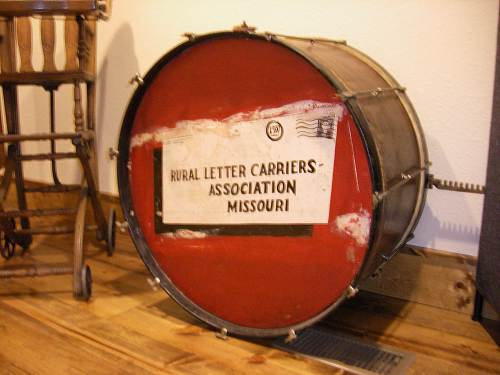
38 RLCA Drum The drum, dated 1937, was owned by Diane’s grandfather, Howard L. Stephens who was postmaster of Eldon, MO, and a member of the NRLCA, a national labor union representing rural mail carriers, founded in 1903. The drum was used in a band made up of members and family of the Missouri Rural Mail Carriers Association.
Further research by Diane’s brother, Stephen Barnhouse, turned up a marvelous photograph of the entire band which included his grandfather, Howard, and his mother, Alpha Stephens Barnhouse. Here is the photo (photo 39):
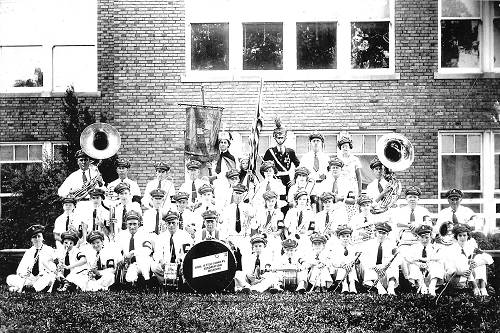
39 Rural Letter Carrier Band - 1938
Click image for larger viewAnd here is the caption which goes with the photo:
Rural Letter Carriers Association, Missouri Vintage 1938
Howard L. Stephens 5th from left, front row holding the snare drum and drumsticks. Alpa Stephens (Barnhouse) daughter of Howard Stephens, holding large banner on back row.
Howard L. Stephens was postmaster of Eldon, Missouri and Alpha was his daughter.
The information about the drum and band was given us by Dianne Barnhouse Henley who is the daughter of Alpha Stephens Barnhouse and granddaughter of Howard L. Stephens
The drum and photo now are on display in our museum in the section devoted to the Miller County Centennial.
Once again we are very appreciative of board member Jim Clark’s willingness to devote his time and superb carpentry skills to the remodeling of the lower level of the older section of our museum (photo 40).
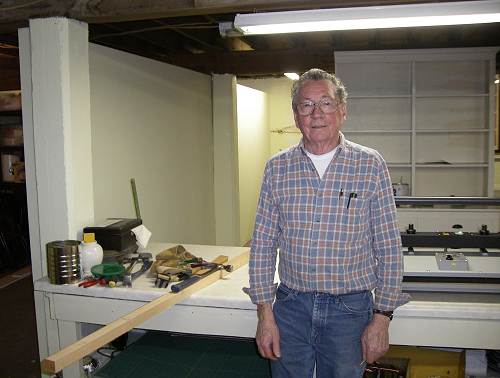
40 Jim Clark New Construction Jim, although having a career as Postmaster in Tuscumbia, is also well known as being one of the area’s master home builders and craftsmen in many different skills. We are very fortunate he is so willing to take on large projects which improve the infrastructure of our museum building.
That’s all for this week.
 Joe Pryor
Previous article links are in a dropdown menu at the top of all of the pages.
|

